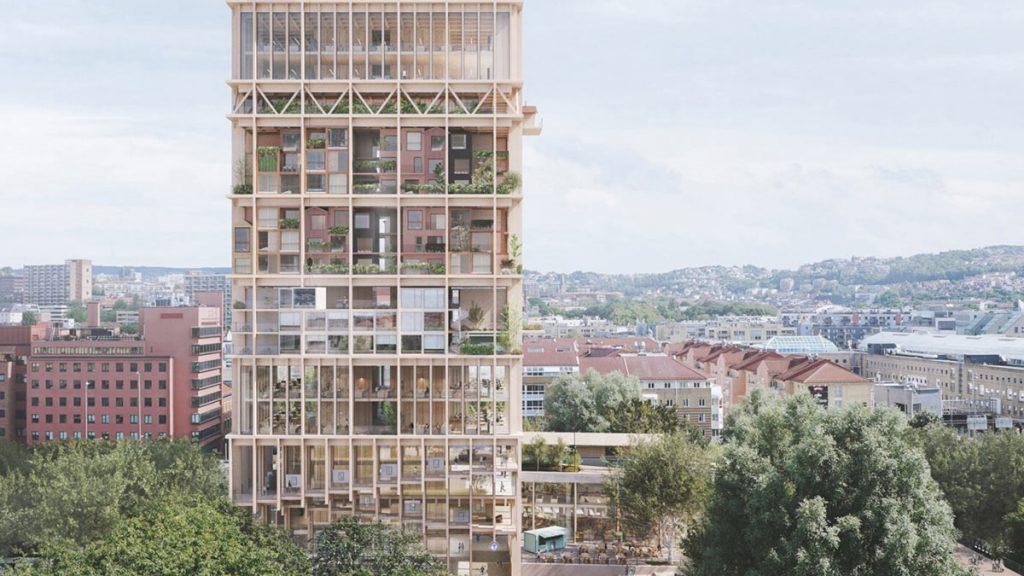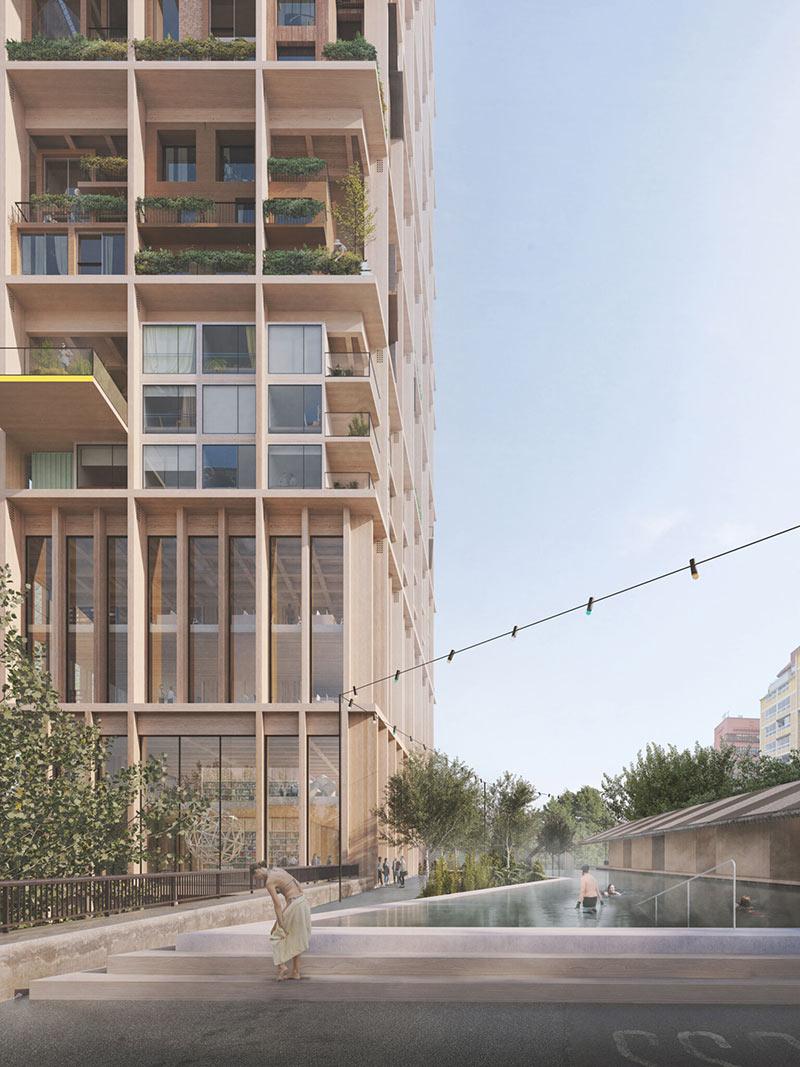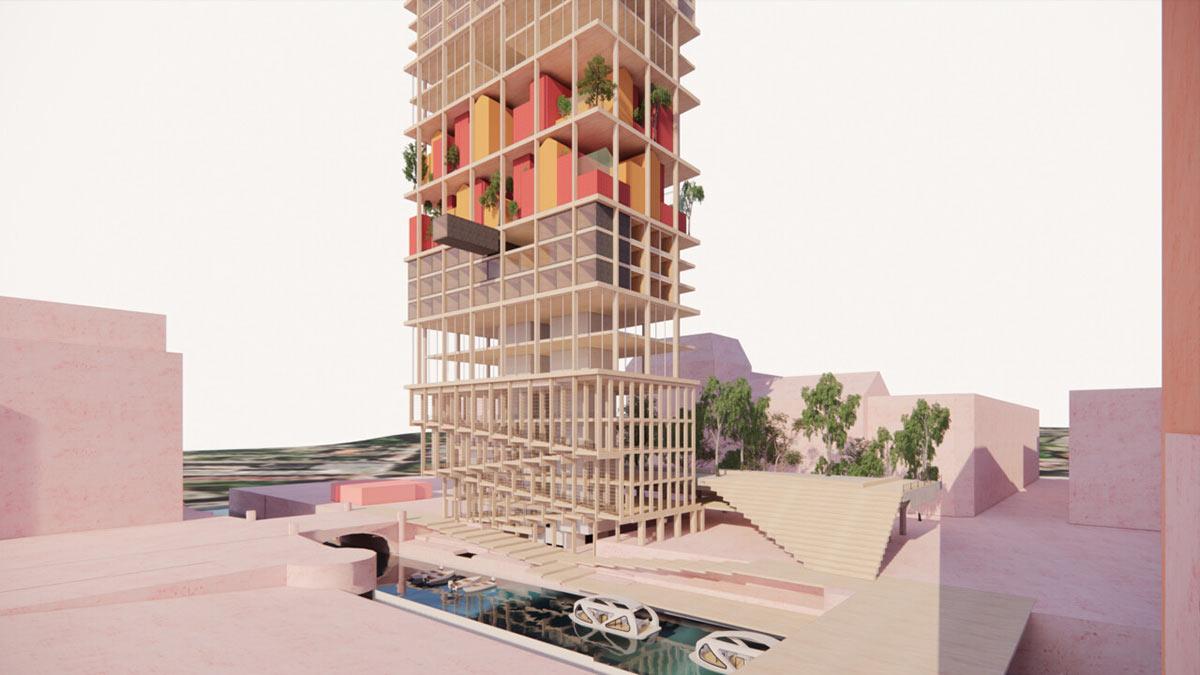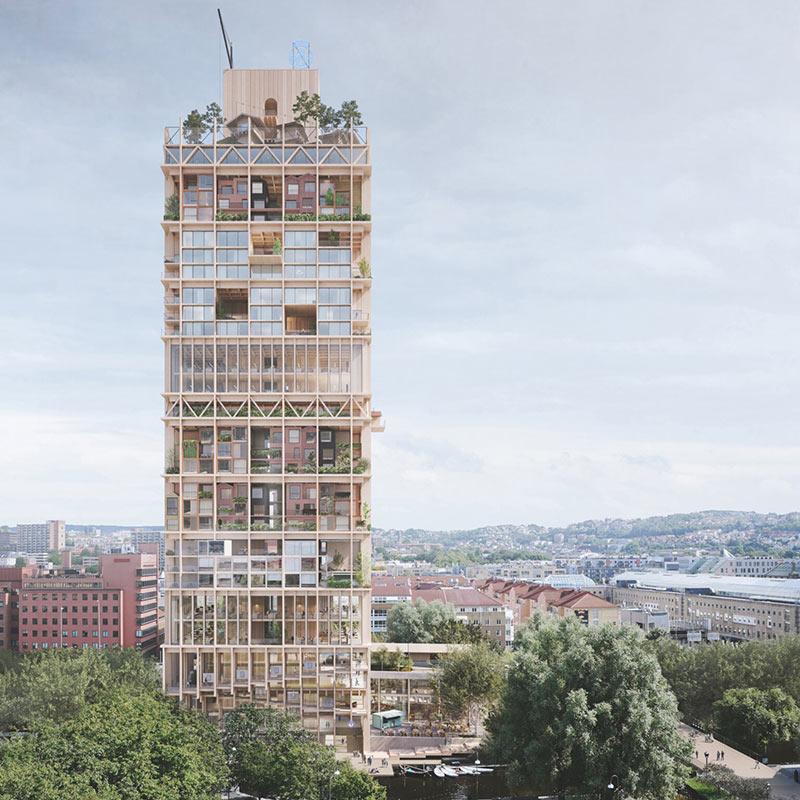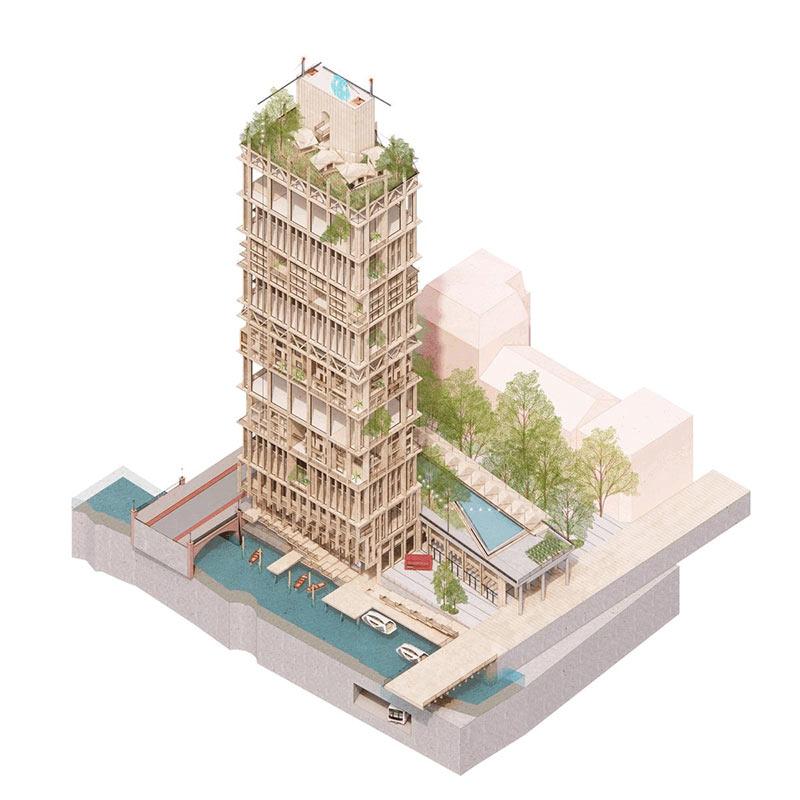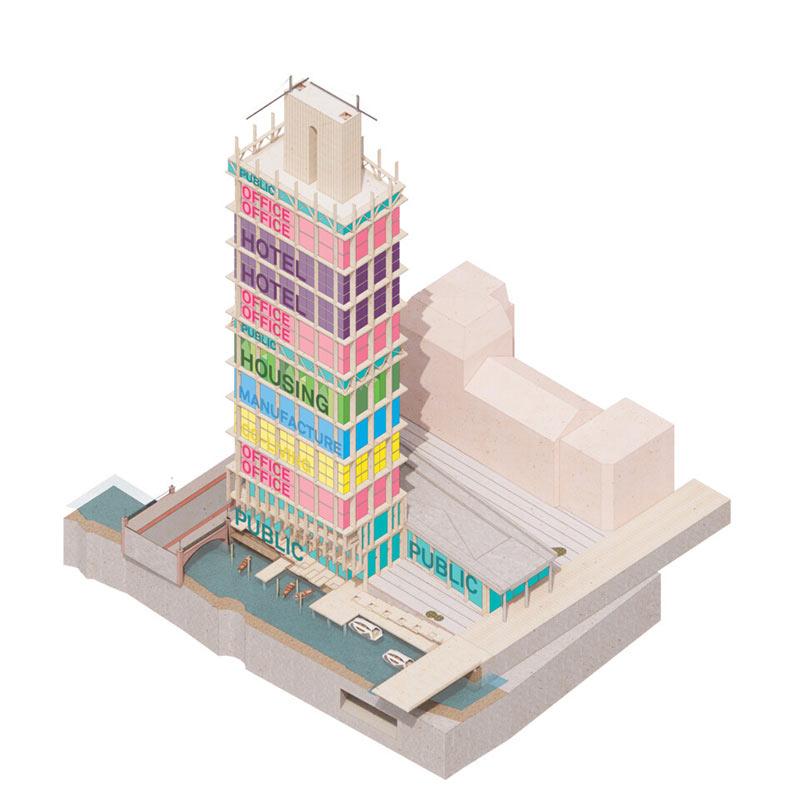Long live the high-rise
The high-rise for the future is built of wood and can be reconfigured at any time. A prototype called the Regenerative High-Rise has been designed by Haptic Architects and Ramboll to be freely adaptable. It is also a sign of a long life ahead for the concept of compact living in tomorrow’s world.
In future, buildings must be able to adapt to ever-changing user needs. In addition, climate change is demanding a radical approach to carbon-neutral construction and new types of vertical urban living. So when the designers at Haptic Architects and the engineers at Ramboll started work on their joint project, they were aware of the challenges. Their collaboration produced the Regenerative High-Rise – a modular timber tower that can be adapted as required.
The Regenerative High-Rise
To illustrate the regenerative potential of their design, the companies positioned this modular high-rise in an exemplary, dense urban setting at the heart of Oslo. The aim was to create a high-rise prototype whose lifecycle extends far beyond conventional timescales.
We need to design buildings that are more flexible to change.
Tomas Stokke, managing director of Haptic Architects
One of the aspirations for the future of construction is the careful handling of resources. “We have seen too many examples of new buildings being demolished because they are unable to be adapted to new uses,” observes Haptic managing director Tomas Stokke in conversation with online portal Dezeen. “We need to design buildings that are more flexible to change.”
Reconfiguration instead of demolition
The Regenerative High-Rise is a well-developed design whose excellent flexibility allows practical use in all sorts of contexts. “The project is designed to push boundaries in sustainable, adaptable high-rise architecture,” the project team explains. “This universal design concept could be commissioned for any city in the world.”
The uses of the Regenerative High-Rise can be changed with ease – from offices to hotel, from residential to production.
Haptic Architects and Ramboll, concept developers
Its design allows a rich variety of uses – whether for living, working or commercial purposes. When the building is needed for a different function, it is simply reconfigured instead of demolished.
“As the pandemic has shown, needs and requirements can change very suddenly. The uses of the Regenerative High-Rise can be changed with ease – from offices to hotel, from residential to production,” the concept developers say.
Three-storey superstructure
This will be achieved by moving away from the traditional static structure of a high-rise and towards a superstructure. The building is structured in larger units of three storeys each, sandwiched between strong, permanent floor slabs. As a timber-composite construction, the building has a frame made of recycled steel elements. A reinforced concrete core and constructional concrete elements are designed to help support the tower.
The three storeys in-between provide a “soft”, flexible space using the concept of plug and play. Individual modules can be combined both horizontally and vertically, for example to form a three-storey multi-generational house with private and communal spaces. Even a small front garden is included in the design.
This mixed-use structure aims to cultivate vertical village communities that strengthen the city’s social fabric. And it is topped with a green hilly landscape on the roof, which will enable its future users to rest and recuperate.
Text: Gertraud Gerst
Translation: Rosemary Bridger-Lippe
Visualizations: Forbes Massie, Haptic Architects
